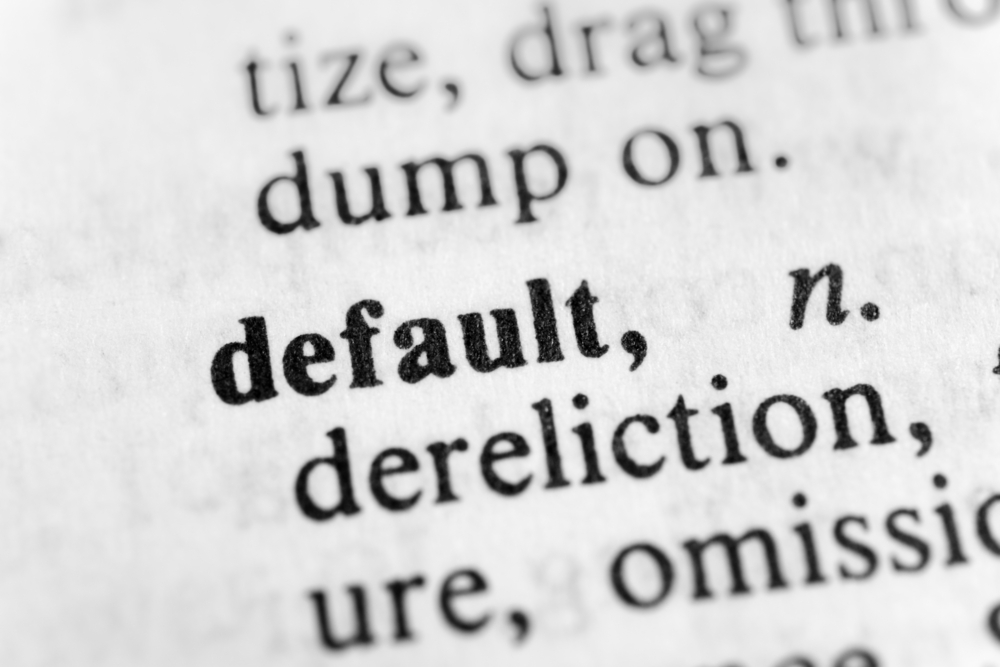Much has been written about leadership, most of which focuses on the characteristics and behaviors of what the writer considers to be a successful leader. It could be argued that there are as many types of successful leader as there are writers on the subject. And some argue further that the distinction between leadership and management is meaningless as good management embraces good leadership and good leadership embraces good management. Without getting too deeply into the semantics of leadership and management, my observation is that the most effective leaders and managers are those determined to take their organizations beyond its default future.
By default I mean the place an organization will end up if its leaders and managers take no action other than that currently planned. In many respects the modus operandi is based upon the (false) assumption that the future will be an extrapolation of the past. But we all know that organizations are operating in an increasingly volatile, uncertain, complex and ambiguous (VUCA) world and as a result the organization’s context can change very rapidly, and with it its future.
The ‘Beyond Default’ leader understands this, and more importantly incorporates this dynamic in the way they lead and manage their organization. So, what do Beyond Default leaders do, how do they think and how do they operate? Below are five characteristics of the Beyond Default leader.
Accept – that their organization is on a trajectory to a default future
Beyond Default leaders accept that their organization is on a trajectory taking it to its default future. They also know that the context within which their organization operates is continually changing and that powerful exogenous forces, like regulation, trade agreements, talent availability, population dynamics, globalization, energy usage and availability, climate change and advances in technology (particularly the internet) are redefining their context. Most importantly, they accept that they have less control over the destiny of their organization than they think or would like to have, and that their strategies and policies rarely change the course of their organization to the extent they had hoped.
Confront – the default future
All too often leaders focus on the future they would like to have, rather than the one they are likely to get – their default future. Only by confronting the default future, and understanding the exogenous and endogenous forces that are determining the trajectory that’s taking the organization to this future, can informed choices be made on what decisions need to be made and actions taken to change the organization’s trajectory to one that leads to an improved future. Confronting the default future is not the same as accepting it, it’s about understanding what it’s likely to be and why.
Explore – the trajectory of strategic opportunity
If the current trajectory is understood – along with the default future that it will bring – the purpose of strategy is to define a different trajectory; one that leads to an improved future. But this new trajectory of strategic intent needs to be cognizant of the exogenous forces that are changing the organization’s context and the capabilities the organization has – and needs – to successfully change its trajectory. This involves firstly exploring the ‘trajectory of strategic opportunity’, which actually is not one trajectory but an ‘envelope’ or spectrum of opportunities open to an organization.
Define – the trajectory of strategic intent
Once the trajectory of strategic opportunity has been explored Beyond Default leaders define and communicate the trajectory of strategic intent in a way that is meaningful to all – particularly those who were not directly involved in its development. All too often an organization’s strategy is too complicated, too detailed or too vague to be meaningful to the people who are expected to implement it. They often lack meaningful definitions of how things should operate in the future, and what challenges need to be managed. Beyond Default leaders making strategic intent more meaningful by clearly articulating and demonstrating how the organization needs to operate and behave differently.
Operationalise – as opposed to implement strategic intent
Beyond Default leaders recognize that articulating strategic intent is necessary but not sufficient and that turning strategic intent into operational reality requires the engagement of all within and even outside the organization. They recognize that they need to create a context where employees can use their experience and apply their expertise to pull the organization to its target future. They understand that strategic intent needs to be embedded within the organization in ways that lead to intellectual, emotional and physical engagement. Importantly, they recognize that organizations are dynamic systems that respond – often in unforeseen ways – when attempts are made to change them.
Being a Beyond Default leader is not easy, especially in large complex organizations that over the years have developed the processes, structures and roles aimed at ‘keeping the organization under control and on track’. But these are the very same bureaucratic processes and structures that are keeping organizations on their default trajectory and frustrating the Beyond Default leader.

